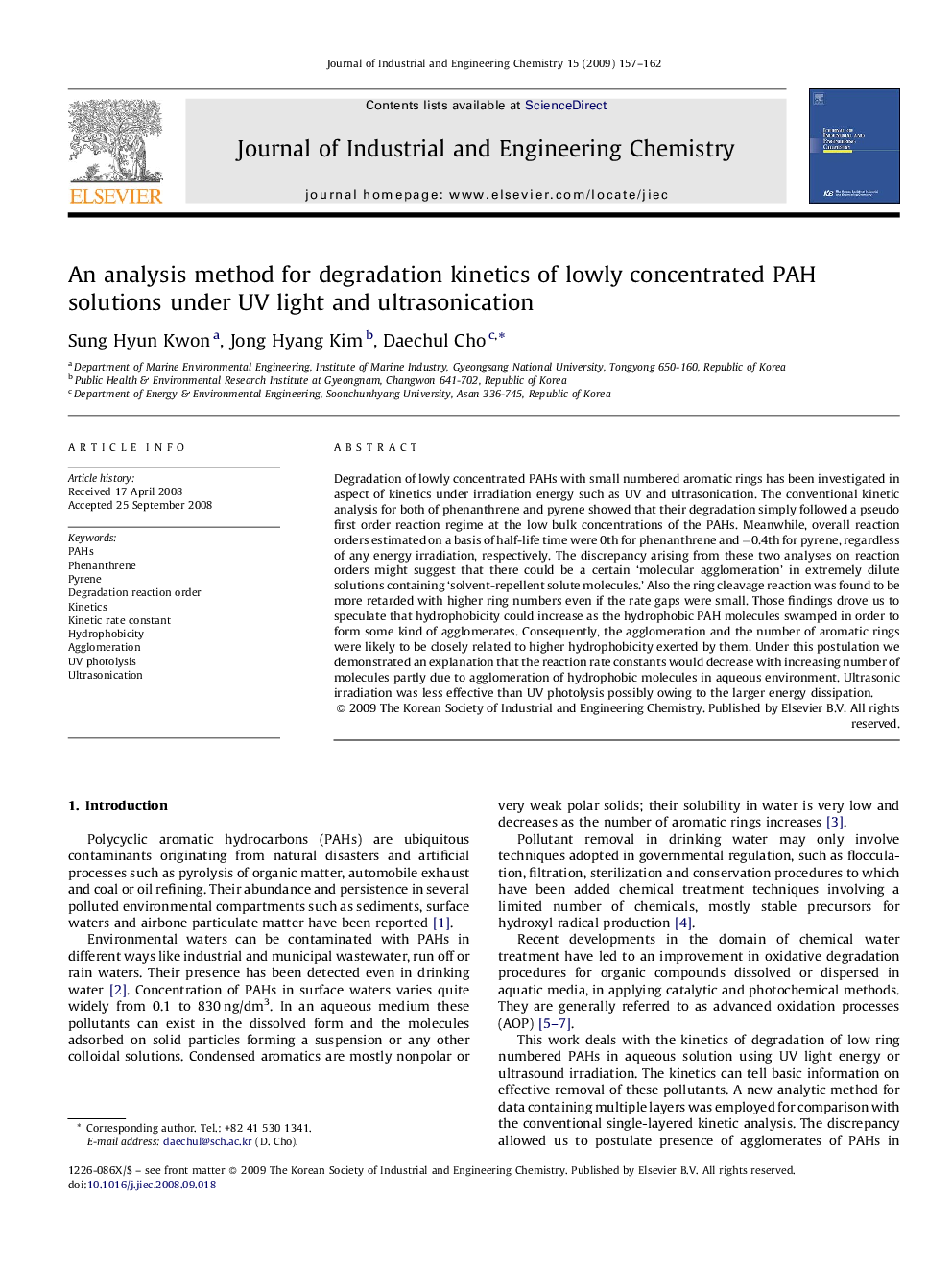| Article ID | Journal | Published Year | Pages | File Type |
|---|---|---|---|---|
| 229307 | Journal of Industrial and Engineering Chemistry | 2009 | 6 Pages |
Degradation of lowly concentrated PAHs with small numbered aromatic rings has been investigated in aspect of kinetics under irradiation energy such as UV and ultrasonication. The conventional kinetic analysis for both of phenanthrene and pyrene showed that their degradation simply followed a pseudo first order reaction regime at the low bulk concentrations of the PAHs. Meanwhile, overall reaction orders estimated on a basis of half-life time were 0th for phenanthrene and −0.4th for pyrene, regardless of any energy irradiation, respectively. The discrepancy arising from these two analyses on reaction orders might suggest that there could be a certain ‘molecular agglomeration’ in extremely dilute solutions containing ‘solvent-repellent solute molecules.’ Also the ring cleavage reaction was found to be more retarded with higher ring numbers even if the rate gaps were small. Those findings drove us to speculate that hydrophobicity could increase as the hydrophobic PAH molecules swamped in order to form some kind of agglomerates. Consequently, the agglomeration and the number of aromatic rings were likely to be closely related to higher hydrophobicity exerted by them. Under this postulation we demonstrated an explanation that the reaction rate constants would decrease with increasing number of molecules partly due to agglomeration of hydrophobic molecules in aqueous environment. Ultrasonic irradiation was less effective than UV photolysis possibly owing to the larger energy dissipation.
